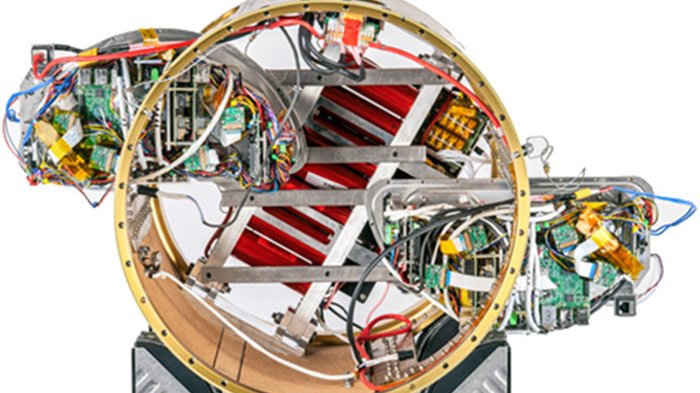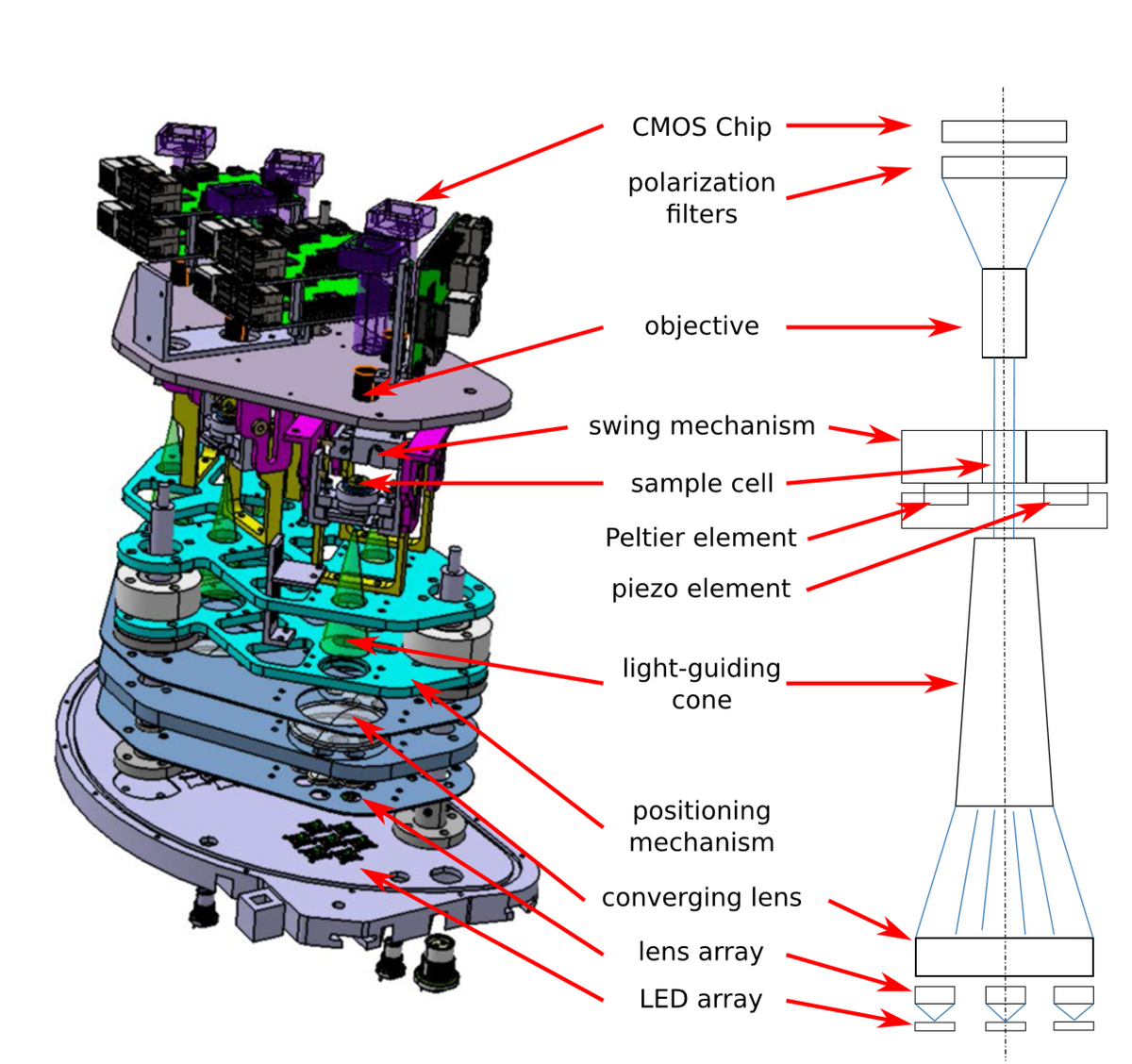
Active particles in weightlessness
In this research project we are investigating well-established active particle suspension systems under the absence of gravity-driven effects. To achieve these conditions, we are carrying out our experiments under microgravity conditions using a setup called RAMSES (RAndom Motion of SElf-propelled particles in Space) that we have designed to enable such experiments on three-dimensional model active brownian particle suspensions in microgravity.
To date, experimental studies on the dynamics of active brownian particle suspensions have mostly been restricted to quasi-two-dimensional situations.
The suspension media have to be chosen to meet the requirements of the respective propulsion mechanism, leaving only little flexibility to density-match the particles. The particles thus sediment to the bottom of the sample cell,on time scales comparable to the motility induced phase separation (MIPS) processes. It is desirable to extend experiments to three-dimensional situations for a twofold reason: first, the dimensional dependence of phenomena such as MIPS should be clarified and second, specific hydrodynamically mediated interactions between the particles and the surface of the sample cell might introduce unwarranted side effects and thus obscure the analysis. Gravity can also cause polar order in otherwise spherically interacting active particles.

The setup is designed for the sounding rocket MAPHEUS (MAterial PHysikalische Experimente Unter Schwerelosigkeit; materials physics experiments under weightlessness) as a highly integrated and autonomous measurement system. It enables in particular the direct comparison of the dynamics of model active brownian particle (ABP) suspensions in quasi-two-dimensional situations on ground and in three dimensions in microgravity. The setup was flown on the MAPHEUS-07 campaign (launched in February 2018 from Esrange, Sweden) and allowed experiments during approximately 6 min of weightlessness conditions. A modified version of the module, containing improved sample-cell handling and better optical alignment, was flown as part of the MAPHEUS-08/ATEK campaign (launched in June 2019). RAMSES is based on a previous on-ground laboratory setup, but it introduces several enhancements and features that were customized for the sounding-rocket environment. In particular, a new light source was developed based on arrays of high-power lightemitting diodes (LEDs) with a specifically adapted optical system to provide homogeneous illumination of the sample cells. The LED array sources replace the laser source used in the laboratory setting and significantly reduce power consumption and heat dissipation during the experiment, which is crucial for the realization of a highly integrated setup. This allows us to contain ten sample cells, each provided with independent illumination and detection units, providing thermostatization to within ± 0.5°C, in the confined space of a single sounding-rocket module. In addition, a new sample cell layout was developed for 3D samples and also adapted to compensate for the strong acceleration and centrifugal forces that act on the suspensions during the startup phase of the rocket flight.
| Direct-imaging of light-driven colloidal Janus particles in weightlessness |
R. Keßler, D. Bräuer, C. Dreißigacker, J. Drescher, C. Lozano, C. Bechinger, P. Born & Th. Voigtmann Rev. Sci. Instrum, 91, 013902 (2020) |
